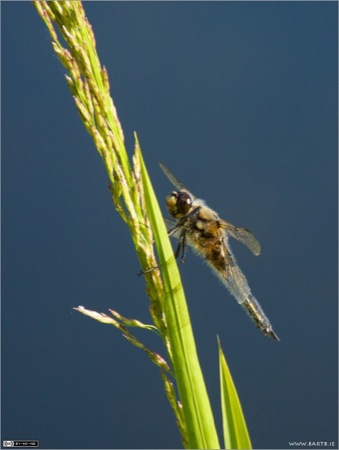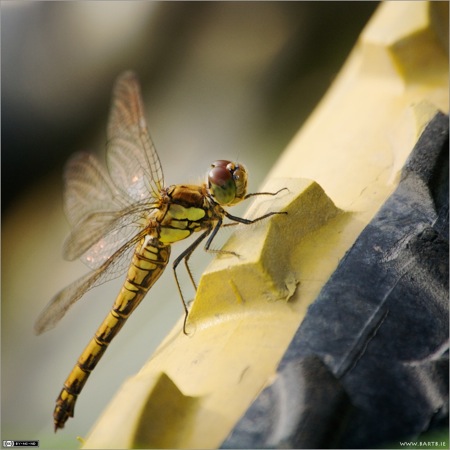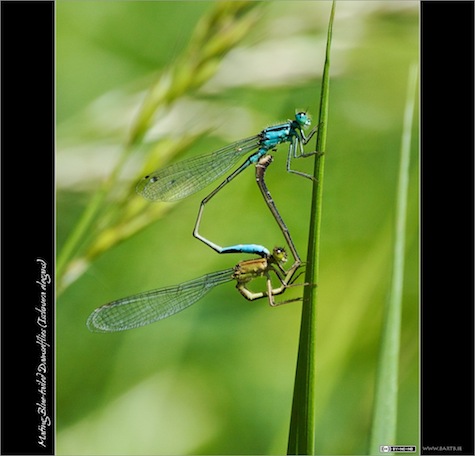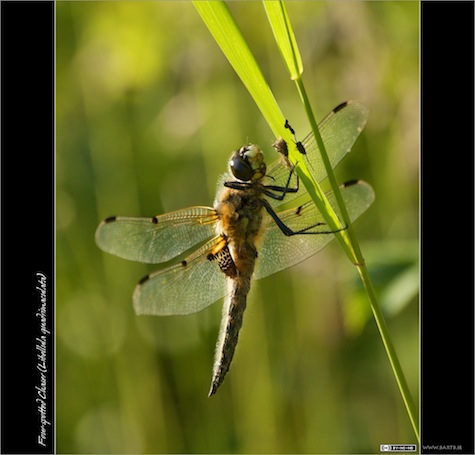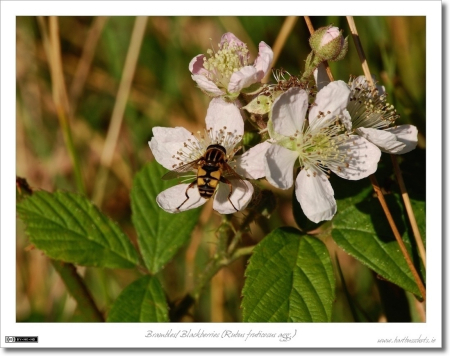Feb
6
Photo of the Week 156 – Four-Spotted Chaser
Filed Under Photography on February 6, 2011 | Leave a Comment
It’s been a while since I shared a Dragonfly shot in this series, so here’s one from last summer. The reason this shot of a Four-spotted Chaser (Libellula quadrimaculata) stands out for me is that I was able to get a lovely smooth blue background by lining things up so that the entire background was filled with the reflection of a clear blue sky in the Canal I was shooting along (the Royal Canal).
- Camera: Nikon D40
- Lens: Nikon DX AFS 55-200mm
- Exposure: 1/500 sec
- Focal Length: 200mm
- Focal Ratio: f/8
- ISO: 400
- Camera Mode: Aperture Priority
- Exposure Bias: -1.0ev
Dec
22
Photo of the Week 149 – Common Darter
Filed Under Photography on December 22, 2010 | Leave a Comment
I’ve had quite enough of all this snow and cold at this stage, so I thought I’d go back to some shots from my new project this year, dragonflies and damselflies. The shot I’ve chosen for today shows a very common kind of dragonfly we see a lot around rivers, lakes, and canals in Ireland, the Common Darter (Sympetrum striolatum). This shot was in some ways very serendipitous – I’d put my bike down along the canal and was waiting for some butterflies or dragonflies to come by, when I noticed that the yellow walls of the the tyres on my bike seems to actually attract this guy! Maybe it looked like a massive yellow flower or something, or maybe it was just nice and warm. What ever his reason was, he sat there happily for about 10 minutes, and let me get as close to him as my lens could focus. I tried about 100 shots from different angles, with different depths of field, and with and without varying amounts of fill flash, but I settled on this one as my favourite. To give you some idea of how ruthlessly I often edit my images down, of the approximately 100 shots I took of this guy, I kept five!
- Camera: Nikon D40
- Lens: Nikon DX AFS 55-200mm
- Exposure: 1/400 sec
- Focal Length: 200mm
- Focal Ratio: f/8
- ISO: 400
- Camera Mode: Aperture Priority
- Flash: manually turned on (for fill flash)
- Flash Exposure Compensation: -3.0ev
- Processing: cropped to a square and tweaked with Aperture’s built-in Dodge & Burn plugin
Aug
24
Photo of the Week 130 & 131 – Two New Muses
Filed Under Photography on August 24, 2010 | 2 Comments
For a long time now my two favourite subjects have been trains and butterflies, but this year I’ve started to be attracted by two related new muses. Butterflies are probably the most eye-catching insects in Ireland, but I think the largest are the Dragonflies and Damselflies that fill our summer skies. I’ve only been focusing on these guys for a few months, but I’ve already got some pictures I like enough to include here.
The first shot I’ve chosen shows a pair of Blue-tailed Damselflies (Ischnura elegans) making more Blue-tailed Damselflies. Two things to note here, firstly, Damselflies opt for a very unique position for mating, and the males and females have very different colours. Adult males of the different species generally look quite distinct (with a few exceptions), but many of the females of the different species look very similar, some species even have females of a few different colours, and to really confuse things, both males and females change colour as they mature. If you can’t recognise what species a Damselfly is, it’s probably a juvenile, or a female, or both. Butterflies are WAY easier to tell apart!
- Camera: Nikon D40
- Lens: Nikon DX AFS 55-200mm
- Exposure: 1/800 sec
- Focal Length: 200mm
- Focal Ratio: f/8
- ISO: 200
- Camera Mode: Aperture Priority
- Exposure Bias: -1.0ev
- Processing: tweaked a little using Aperture’s Dodge & Burn plugin
The second shot I chose is of the largest Dragonfly I’ve managed to capture so far, the Four-spotted Chaser (Libellula quadrimaculata). These guys are very territorial. They get their name because they chase away other Dragonflies that stray into their patch (and have 4 spots on each set of wings). They like to sit on perches that give them a good view of their territory, and will keep returning to their favourite perches over and over again. This makes them a joy to photograph, if you miss the perfect shot the first time around, just wait a bit, and you’ll get another chance! The fact that they like a perch with a good view also means you tend to be able to get shots with nice clutter-free backgrounds too.
I’ve also started to experiment a lot with back-lighting in the last few months. As this shot demonstrates, it can work nicely on insects which tend to have transparent or semi-transparent bits for the light to shine through.
- Camera: Nikon D40
- Lens: Nikon DX AFS 55-200mm
- Exposure: 1/400 sec
- Focal Length: 200mm
- Focal Ratio: f/8
- ISO: 400
- Camera Mode: Aperture Priority
- Exposure Bias: -1.0ev
- Processing: tweaked a little using Aperture’s Dodge & Burn plugin
Mar
22
Photo of the Week 57 – Hoverfly on Brambles
Filed Under Photography on March 22, 2009 | 2 Comments
This is one of many shots that I’ve taken while mountain biking along the towpath of the Royal Canal in and around Maynooth. This particular shot was taken between Pike’s Bridge and Deey Bridge (just outside the Intel plant in Leixlip). On this section the towpath is not paved in any way, there isn’t even a gravel path, it’s just a grassy trail. There’s a lot more nature to be seen along these un-developed stretches of the towpath, so I enjoy cycling here the most, even if that does mean getting muddy sometimes.
I’m not really sure exactly what insect this is, but I’m assuming it’s some species of Wasp (if anyone does know please post a comment). The flowers however I can identify, they’re Bramble/Blackberry (Rubus fruticosus agg.) blossoms.
Update: Tom Gleeson has identified the insect as a particular species of Hoverfly – Helophilus pendulus, thanks Tom!
- Camera: Nikon D40
- Lens: Nikon DX AFS 55-200mm
- Exposure: 1/160 sec
- Focal Length: 200mm
- Focal Ratio: F20
- ISO: 200
- Camera Mode: Aperture Priority
- Exposure Bias: -0.67







